Phosphate Glass Detectors for Heavy Ion Identification
Abstract
:1. Introduction
2. Material and Methods
2.1. Glass Characteristics and Irradiation Mode
2.2. Measurements
2.3. The Etching Mode
2.4. Thermal Testing
3. Results and Discussion
4. Conclusions
Author Contributions
Funding
Institutional Review Board Statement
Informed Consent Statement
Data Availability Statement
Acknowledgments
Conflicts of Interest
References
- Back, B.B.; Esbensen, H.; Jiang, C.L.; Rehm, K.E. Recent developments in heavy-ion fusion reactions. Rev. Mod. Phys. 2014, 86, 317–360. [Google Scholar] [CrossRef]
- Oganessian, Y.T.; Penionzhkevich, Y.E.; Grigoriev, V.A. Heavy Ion Physics and Its Applications; JINR Educational and Scientific Center: Dubna, Russia, 2021. (In Russian) [Google Scholar]
- Price, P.B.; Cook, L.M.; Markert, A. Phosphate glasses for identification of heavy ions. Nature 1987, 325, 137–138. [Google Scholar] [CrossRef]
- Garg, A.; Kumar, S.; Sharma, A. A study of heavy ion tracks in phosphate glass detectors. Int. J. Radiat. Appl. Instrumentation. Part A Appl. Radiat. Isot. 1988, 39, 109–111. [Google Scholar] [CrossRef]
- Singh, G.; Kaur, R.; Virk, H.S. Track etching studies in phosphate glass detectors. Int. J. Radiat. Appl. Instrum. Part D Nucl. Tracks Radiat. Meas. 1991, 19, 655–656. [Google Scholar] [CrossRef]
- Price, P.B. Science and technology with nuclear tracks in solids. Radiat. Meas. 2005, 40, 146–159. [Google Scholar] [CrossRef]
- Kodaira, S.; Miyamoto, Y.; Koguchi, Y.; Maki, D.; Shinomiya, H.; Hanaoka, K.; Hasebe, N.; Kawashima, H.; Kurano, M.; Kitamura, H.; et al. Application of Ag+-doped phosphate glasses as nuclear track etch detectors. Radiat. Meas. 2014, 71, 537–540. [Google Scholar] [CrossRef]
- Aschenbach, J.; Fiedler, G.; Schreck-Köllner, H.; Siegert, G. Special glasses as energy detectors for fission fragments. Nucl. Instrum. Methods 1974, 116, 389–395. [Google Scholar] [CrossRef]
- Gransky, Y.P.; Markov, B.N.; Perelygin, V.P. Registration and Spectrometry of Fission Fragments, 2nd ed.; Energoatomizdat: Moscow, Russia, 1992. (In Russian) [Google Scholar]
- Flerov, G.N.; Oganesian, Y.T.; Lobanov, Y.V.; Lasarev, Y.A.; Tretiakova, S.P.; Kolesov, I.V.; Plotko, V.M. On the synthesis of element 105. Nucl. Phys. A 1971, 160, 181–192. [Google Scholar] [CrossRef]
- Gulbekian, G.G.; Dmitriev, S.N.; Itkis, M.G.; Oganessyan, Y.T.; Gikal, B.N.; Kalagin, I.V.; Semin, V.A.; Bogomolov, S.L.; Buzmakov, V.A.; Ivanenko, I.A.; et al. Start-Up of the DC-280 Cyclotron, the Basic Facility of the Factory of Superheavy Elements of the Laboratory of Nuclear Reactions at the Joint Institute for Nuclear Research. Phys. Part. Nucl. Lett. 2019, 16, 866–875. [Google Scholar] [CrossRef]
- Tretiakova, S.P. Dielectric detectors, their use in experimental nuclear physics. Phys. Part. Nucl. 1992, 23, 364–429. (In Russian) [Google Scholar]
- Tretiakova, S.P. The Use of Dielectric Detectors for Recording Rare Events of Radioactive Decay of Transfermium Elements (JINR Reports R7-88-711); Joint Institute for Nuclear Research: Moscow, Russia, 1988. (In Russian) [Google Scholar]
- Goncharova, L.A.; Konovalova, N.S.; Okateva, N.M.; Starkova, E.N. Method of an Automated Search for Rare Events of Superheavy Nuclei Decay Using Phosphate Glass Detectors. Phys. At. Nucl. 2020, 83, 1304–1312. [Google Scholar] [CrossRef]
- Aleksandrov, A.B.; Apacheva, I.Y.; Feinberg, E.L.; Goncharova, L.A.; Konovalova, N.S.; Martynov, A.G.; Polukhina, N.G.; Roussetski, A.S.; Starkov, N.I.; Tsarev, V.A. Completely automated measurement facility (PAVICOM) for track-detector data processing. Nucl. Instrum. Methods Phys. Res. Sect. A 2004, 535, 542–545. [Google Scholar] [CrossRef]
- Alexandrov, A.; Konovalova, N.; Okateva, N.; Polukhina, N.; Starkov, N.; Shchedrina, T. Upgrade and new applications of the automated high-tech scanning facility PAVICOM for data processing of track detectors. Measurement 2022, 187, 110244. [Google Scholar] [CrossRef]
- Nikolaev, V.A. Solid-State Track Detectors in Radiation Research; Polytechnic University Publishing House: St. Petersburg, Russia, 2012. [Google Scholar]
- Tretiakova, S.P. Application of Dielectric Detectors for Registration of Rare Events of Radioactive Decay of Transfermium Elements; JINR Messages: Dubna, Russia, 1988; No P7-88-711; pp. 1–13. [Google Scholar]
- Nikolaev, V.A.; Perelygin, V.P. Glass track detectors. Instrum. Exp. Tech. 1976, 19, 7–17. (In Russian) [Google Scholar]
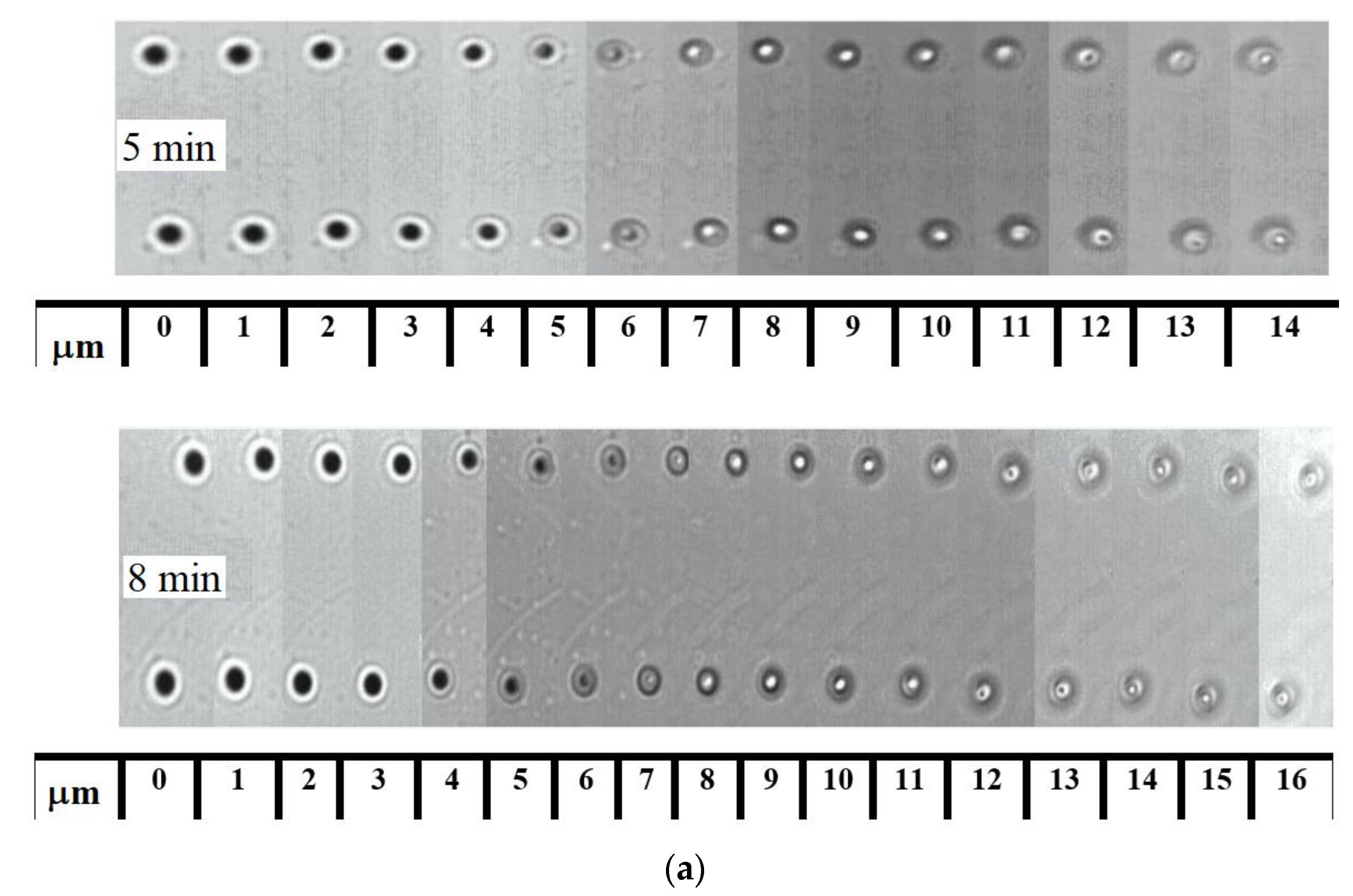
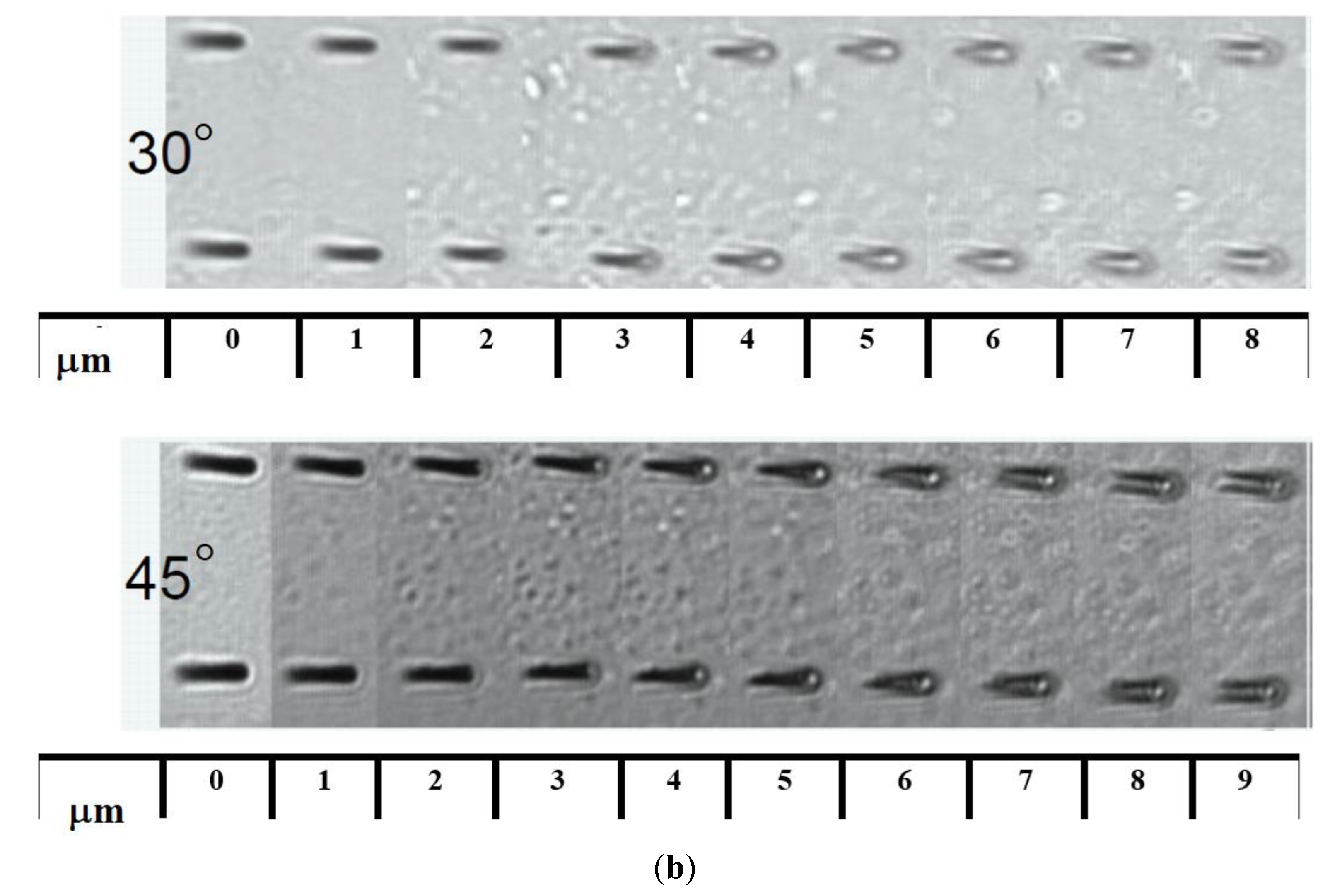

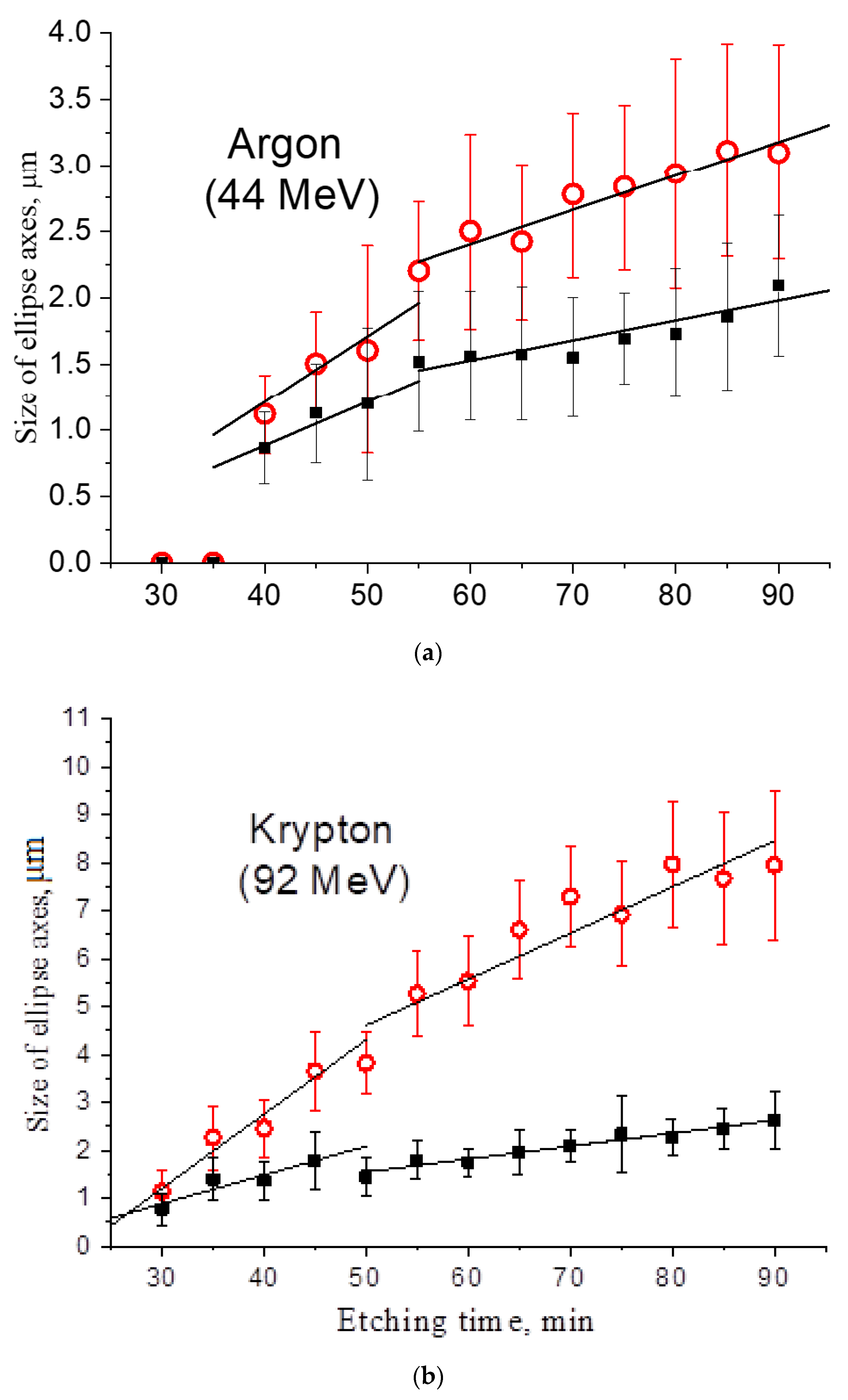
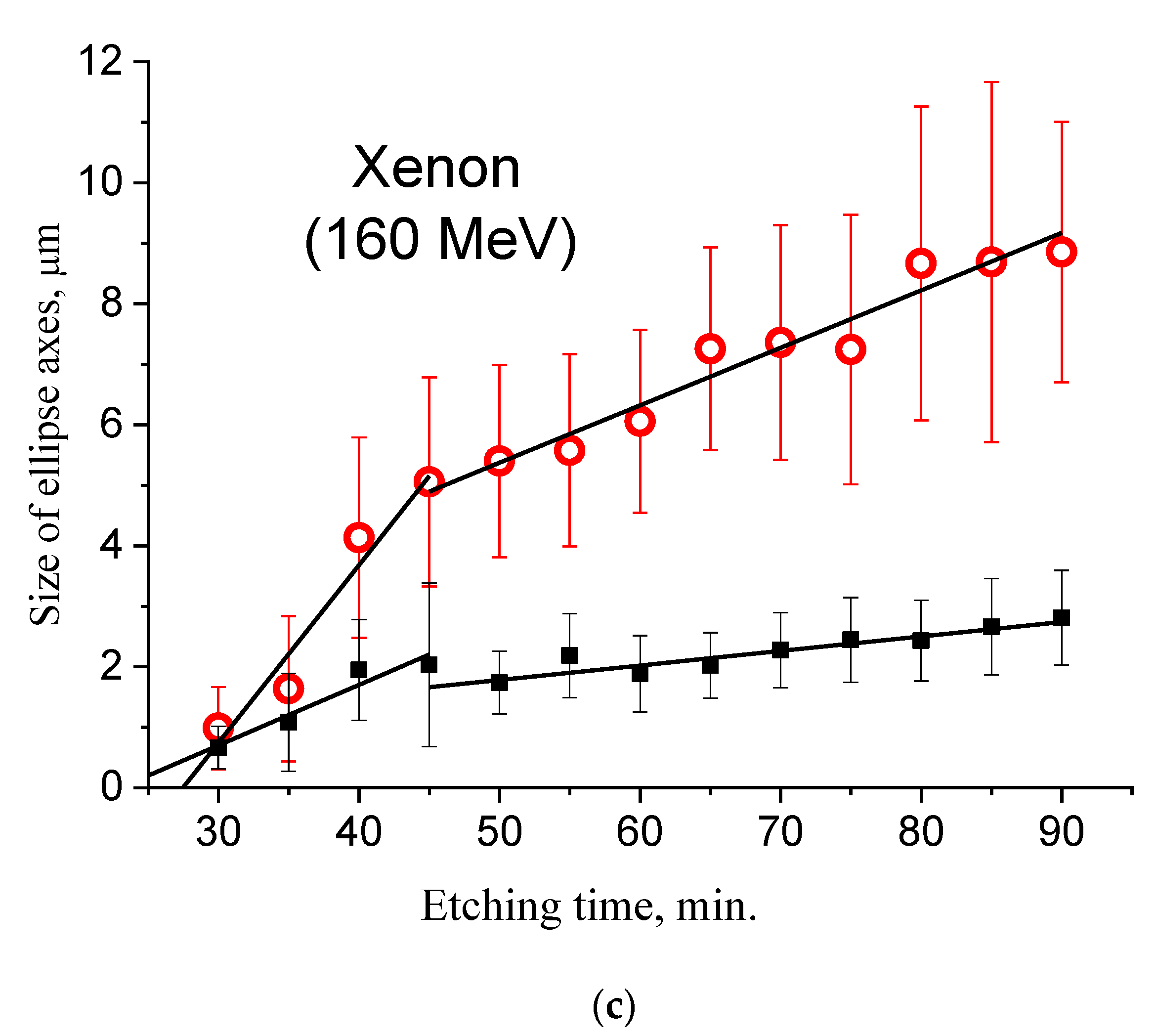
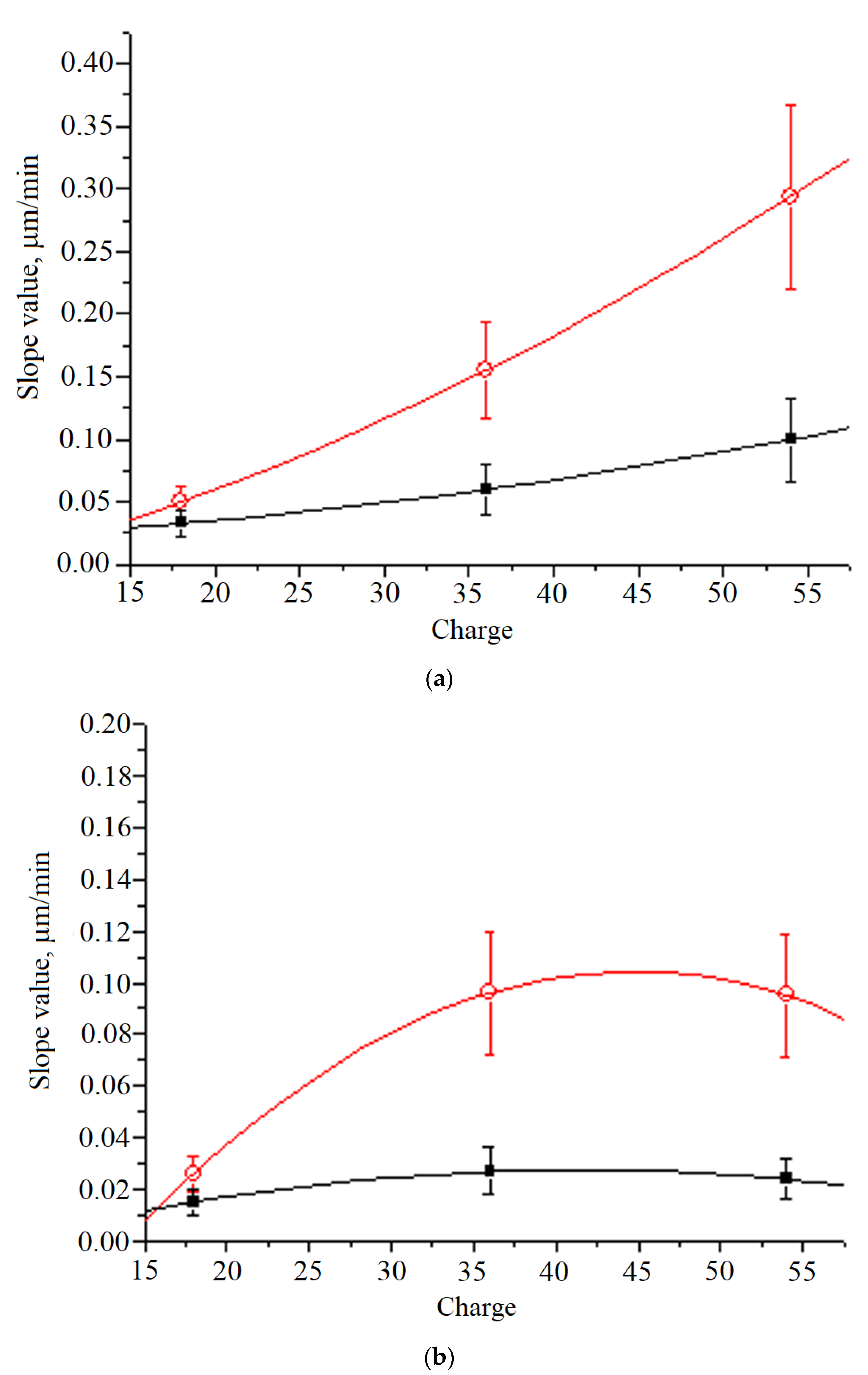
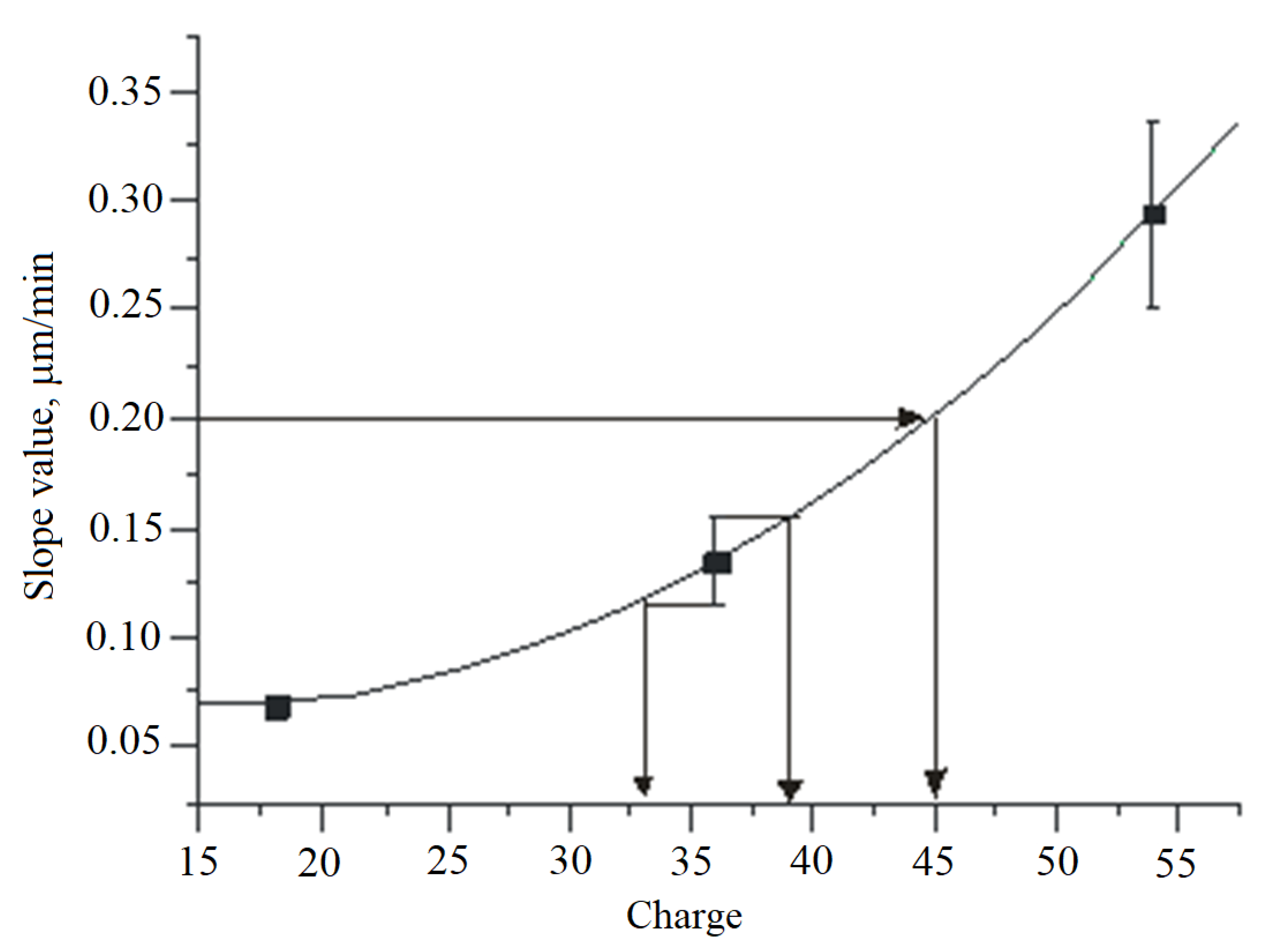
| Type I | |||
|---|---|---|---|
| Temperature, °C | Etching 30 min | Etching 40 min | Etching 50 min |
| 200 | 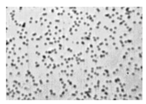 | 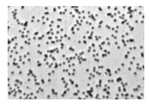 | 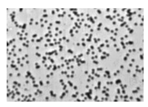 |
| 300 |  |  |  |
| 400 | 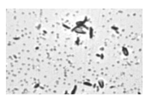 |  |  |
| 500 | 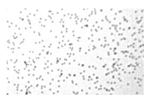 | 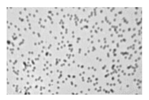 | 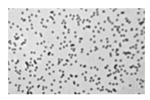 |
| Type II | |||
| Temperature, °C | Etching 30 min | Etching 40 min | Etching 50 min |
| 200 |  |  |  |
| 300 |  | 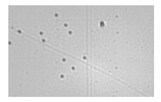 | 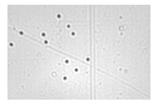 |
| 400 | 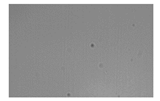 | 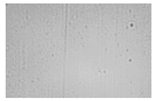 | 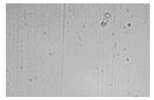 |
| 500 | 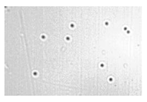 | 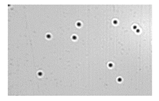 | 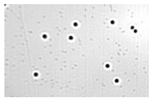 |
Publisher’s Note: MDPI stays neutral with regard to jurisdictional claims in published maps and institutional affiliations. |
© 2022 by the authors. Licensee MDPI, Basel, Switzerland. This article is an open access article distributed under the terms and conditions of the Creative Commons Attribution (CC BY) license (https://creativecommons.org/licenses/by/4.0/).
Share and Cite
Burtebayev, N.; Chernyavskiy, M.; Gippius, A.; Kalinina, G.; Konovalova, N.; Nassurlla, M.; Kvochkina, T.; Nassurlla, M.; Okateva, N.; Pan, A.; et al. Phosphate Glass Detectors for Heavy Ion Identification. Universe 2022, 8, 474. https://doi.org/10.3390/universe8090474
Burtebayev N, Chernyavskiy M, Gippius A, Kalinina G, Konovalova N, Nassurlla M, Kvochkina T, Nassurlla M, Okateva N, Pan A, et al. Phosphate Glass Detectors for Heavy Ion Identification. Universe. 2022; 8(9):474. https://doi.org/10.3390/universe8090474
Chicago/Turabian StyleBurtebayev, Nassurlla, Mikhail Chernyavskiy, Alexei Gippius, Galina Kalinina, Nina Konovalova, Marzhan Nassurlla, Tatyana Kvochkina, Maulen Nassurlla, Natalia Okateva, Andrey Pan, and et al. 2022. "Phosphate Glass Detectors for Heavy Ion Identification" Universe 8, no. 9: 474. https://doi.org/10.3390/universe8090474
APA StyleBurtebayev, N., Chernyavskiy, M., Gippius, A., Kalinina, G., Konovalova, N., Nassurlla, M., Kvochkina, T., Nassurlla, M., Okateva, N., Pan, A., Polukhina, N., Sadykov, Z., Shchedrina, T., Starkov, N., Starkova, E., & Zasavitskii, I. (2022). Phosphate Glass Detectors for Heavy Ion Identification. Universe, 8(9), 474. https://doi.org/10.3390/universe8090474








